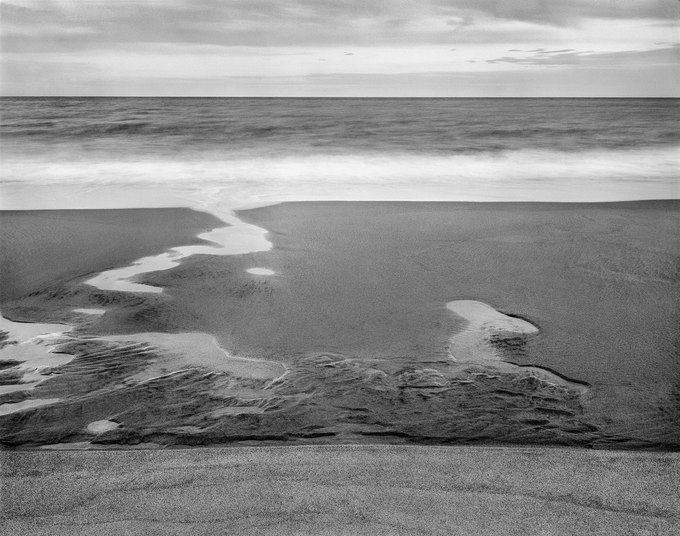Cradled in the dunes behind Coast Guard Beach once sat Henry Beston's cabin where he wrote his 1928 classic "The Outermost House," a poetic diary of a year lived on Cape Cod's eastern shore. This evening, the intertidal flats, fed by water draining into the ocean from the beach face, filled small depressions. Sand ripples, formed by the continuous rhythmic motion of the waves, were rounded on their crests by the ebbing water, with each tide cycle staging a new rendering of this shore. Beston called this remote beach "Solitary and elemental, unsullied, and remote, visited and possessed by the outer sea; these sands might be the end or the beginning of a world."
Much has changed since Beston wrote those words. Glacial deposits that began accumulating 18,000 years ago shaped Cape Cod of unconsolidated sand and till hundreds of feet deep. The shoreline loses an average of three feet annually and is exceptionally high along the cape's exposed forearm where Beston's house once stood. It was moved a couple of times back away from the eroding beach and, in 1978, was destroyed by "Nor'easter" storm tides and – along with the high dunes around where it sat – was washed out to sea.
This photograph captures the beach in one moment of its history. Coast Guard Beach served as the initial landing site of the Mayflower on November 9, 1620. Henry David Thoreau began his 28-mile walk from here to Provincetown at the north end of the cape and wrote about that experience in his book "Cape Cod" in the mid-19th century. Beston's classic also memorialized what has become an ever-changing shore now fixed in memory.
Location research and commentary by James Baker.

